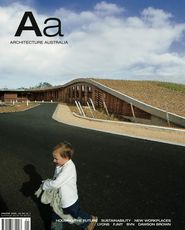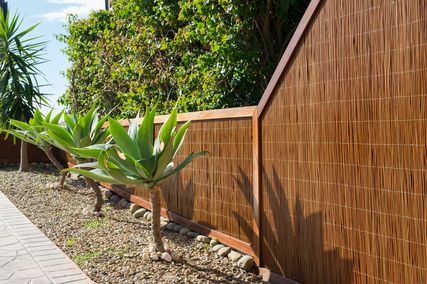THE HIGH COURT BECAME A DINING ROOM FOR LAST YEAR’S RAIA AWARDS, WITH COL MADIGAN AS DINNER SPEAKER. WE PRESENT THE TALK, ALONG WITH DRAWINGS FROM MADIGAN’S WORK ON THE NATIONAL GALLERY OF AUSTRALIA.
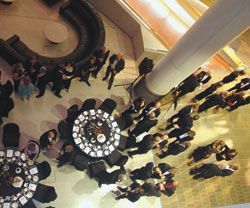
The High Court of Australia as dining room. The 2004 RAIA National Awards dinner.
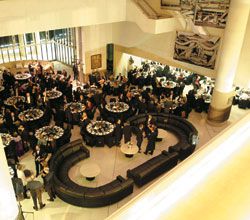
The High Court of Australia as dining room. The 2004 RAIA National Awards dinner.
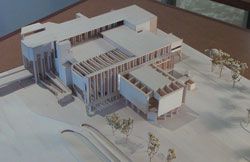
The proposed National Gallery of Australia entrance enhancement, with new south stair hall. Design team: Col Madigan, Angelo Candalepas, Roger Vidler.
MR PRESIDENT, IT is with great pleasure that I thank you and the Royal Australian Institute of Architects for inviting my wife Rube and me to be part of this auspicious occasion. I am honoured to talk tonight in the High Court of Australia and to view the National Architecture Awards in the National Gallery.
There is an adage, that when architects start practice after graduation the first job is usually kitchen cupboards for a mother or new wife – but Rube, I never expected to be in a dining room of this magnificence.
My firm Edwards Madigan Torzillo and Briggs was lucky to take part in the creation of this precinct, located in our young nation’s still-developing Parliamentary Triangle. One day this place may challenge Beijing and Babylon and other cities of antiquity – our capital is not yet 100 years old. On my watch we operated from 1948 to 1990, but I first saw this site as a six-year-old child – I crossed the Molongo on a dirt road and saw kangaroos in this pastoral paddock – and I am still involved in the gallery’s deliberations. It is a long story about regressions to the Sanskrit of Griffin’s fables and the colonial bureaucratic fortress devoid of native ideas.
I worked with a great team of architects on both buildings. The gallery was the testbed, with engineers and builders (whom I call the new heroes – like the stonemasons of the medieval age, but here using the quiddity of concrete) asking that their crafted forms for the concrete pours directly produce the finished product.
I thank the Institute for arranging this venue - it is a stunningly correct opportunity to recognize all the people who created this precinct – and for the unique moment, enclosed in these spaces, to thank Rube for her support and assistance over the long haul, for her participation in all the mighty battles that shape the parts of this realization.
I believe architecture is “the mother of all the arts” and imagination is the beginning of all architectural creation. For most of my life I have been influenced by a process called “Creative Evolution” – a desire and a will to create what has been imagined. It is a philosophical theory portrayed in George Bernard Shaw’s masterpiece Back to Methuselah, written in 1921. This is his wonderful philosophy of life, which we in our profession mimic with architectonic expressions. I like to think architecture is articulate, a veracious messenger.
Shaw would say, regarding the present depressing state of world affairs, “if there be no will we are lost”, and sadly that is a possibility these days, for our civilization if not for the universe itself. History records many extinctions. When a great research professor, Martin Rees, an international leader in cosmology and space science at Cambridge University, writes a book entitled Our Final Century, we must all take care, for the future is almost upon us. Thinkers like Rees, and the new Darwinian Edward O. Wilson, preach to us about these things. The earth, Gaia, is a living organism, but we remain as we are, like the fishes and the birds, while our planet’s environment deteriorates to the critical moment when its self-sustaining qualities will fail. Do we have the will to do anything about it?
We must look at life and architecture in terms of the most challenging knowledge that science presents, with something that accords distinction to the “magisteria” of both science and religion, the natural world and the moral world.
The National Architecture Awards display gives images, symbols and codes, not of who we are but of what we may become. I congratulate my fellow professionals for showing this surge to a better environment, and I am encouraged to see this extension of the “life force” visually presented and properly awarded. There is an optimism in the architectural wave, always an attempt to synchronize the illusive Platonic forms of goodness, truth and beauty. A silent revolution stares us in the face, approaching a visual “theory of everything”, an investigation into how to improve conditions.
Remember, good visual environment is life-sustaining, as essential as good plumbing. Enduring architecture reflects life itself. Its triumphs, its shadows and its eloquent prophetic expressions point out new ways back to a vital economy. The moral extinction of visual poverty is to everyone’s benefit.
My age group came out of World War II with utopian ideals – there had to be something better than the barbarity that we had been through. The egalitarian spirit thrived in the services. Liberated as we were from Britain’s yoke, Prime Minister Chifley would nationalize the banks and Prime Minister Menzies carried on the development of our national capital.
I listened to the visionaries of that time talking about the capital, as others will in the future: the late Sir John Overall, Roger Johnson, Robin Boyd and many others. They were the poets who left utopian plans for their realization. For Canberra, a great pedestrian place by the lake.
Like other great plans it was not to be. New management, contentious waters, a passion directed only to Capital Hill – to analyse the notes and not hear the symphony was indeed regrettable. The dream is now a sense of loss, like some kind of imagined body memory. Both the National Gallery and the High Court, monuments historique if you like, both now heritage listed, are the remnants of the abandoned grand plan for this parliamentary place and we must look to their proper settings.
I first met Roger Johnson in 1968; he was then the assistant Commissioner of Architecture and Urban Planning at the National Capital Development Commission. His 1971 plan, the master criteria on which the National Gallery and the High Court were predicated, was unduly abandoned in 1975, well after both the buildings were under construction. An urban planning scandal indeed. Interested observers should be made aware of the ridiculous and absurd design contradictions that now ensue.
When will it be realized that the Parliamentary Triangle is a public concern? Particularly if, as in the nascent “reawakening”, we are to establish our national independence and identity after some 220 years. The Triangle is, after all, the most important piece of land in the country. Now as the old dreams recede into the middle distance they become more potent and more relevant to the problem at hand.
The 1971 plan sought to give our nation a truly great centrepiece, drawn from the evolution of all the great urban spaces, now made and recorded in archaeology. It was informed in every respect by the frontier of thought. It was not linked in any manner to the limited, dated, easy-to-copy, undemocratic, Beaux Arts imagery that the historic authority has now planned.
Roger Johnson knew that our land had an extra Australian dimension, which could be emphasized and captured, as in the iconography of some unique and magic place. If we ever stand in the centre and look back to the north-east at these two national buildings, across the great pedestrian plaza, it becomes a capital.
I have described the diverse site conditions affecting a design as similar to a biomass, where all the diversity gives a healthy, unified product. This decreases with parts destroyed, until it is entirely desecrated. Think deforestation or – apart from the effect of the lost National Place on the High Court – the reversal of the road to the gallery, which lost all the connections of how it works. So the satisfaction and fulfilment of completion is frustrated. Fight on then for the truthful resolution to be freed.
We deal with the silent, communicating, intangible qualities and values of aesthetics, metaphysics and ethics, where purpose and ideas transcend the world of facts and, as such, are proved when a state of order, harmony and repose is evident.
Thinking of the optimistic over-yielding work we have seen tonight, we are reminded that architecture, like all subjects, no matter how specialized, is connected to a centre linked to the very life process itself and its struggle for higher consciousness, while battling on its evolutionary way to find its proper fit in the environment and the lives of humankind. The various subjects are like rays emanating from a sun.
Gratitude, then – a most important product of your work, for the care, the concern and a commitment to every layer of the task producing the ideas, a range of fulfilling messages beyond surface qualities that have the power to move us.
Congratulations on your awards, rejoice in your achievements. It’s your time to cross the Molongo. ››
COL MADIGAN. THIS IS AN EDITED TRANSCRIPT OF AN ADDRESS GIVEN ON 28 OCTOBER 2004 AT THE RAIA NATIONAL ARCHITECTURE AWARDS, CANBERRA.

